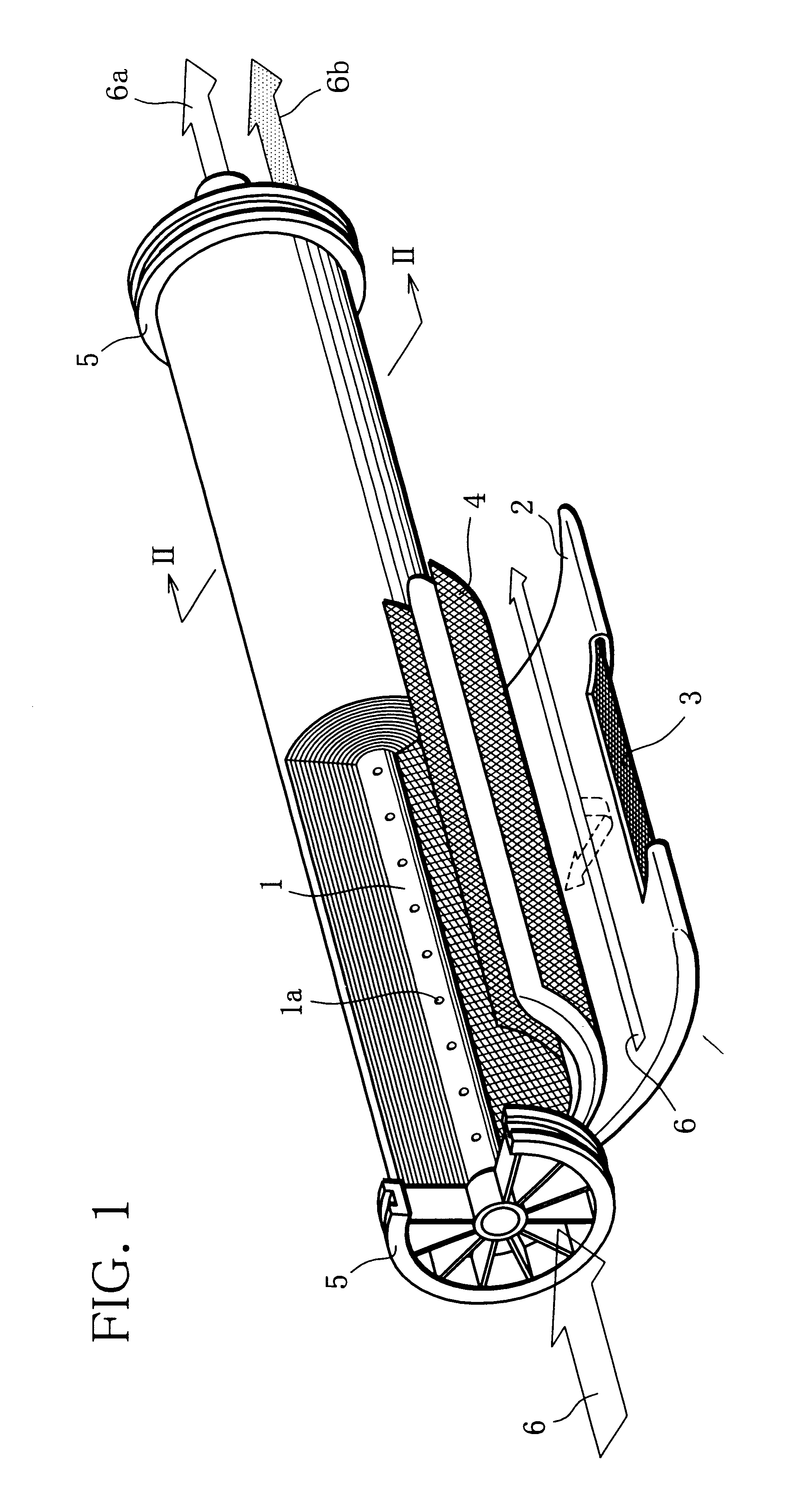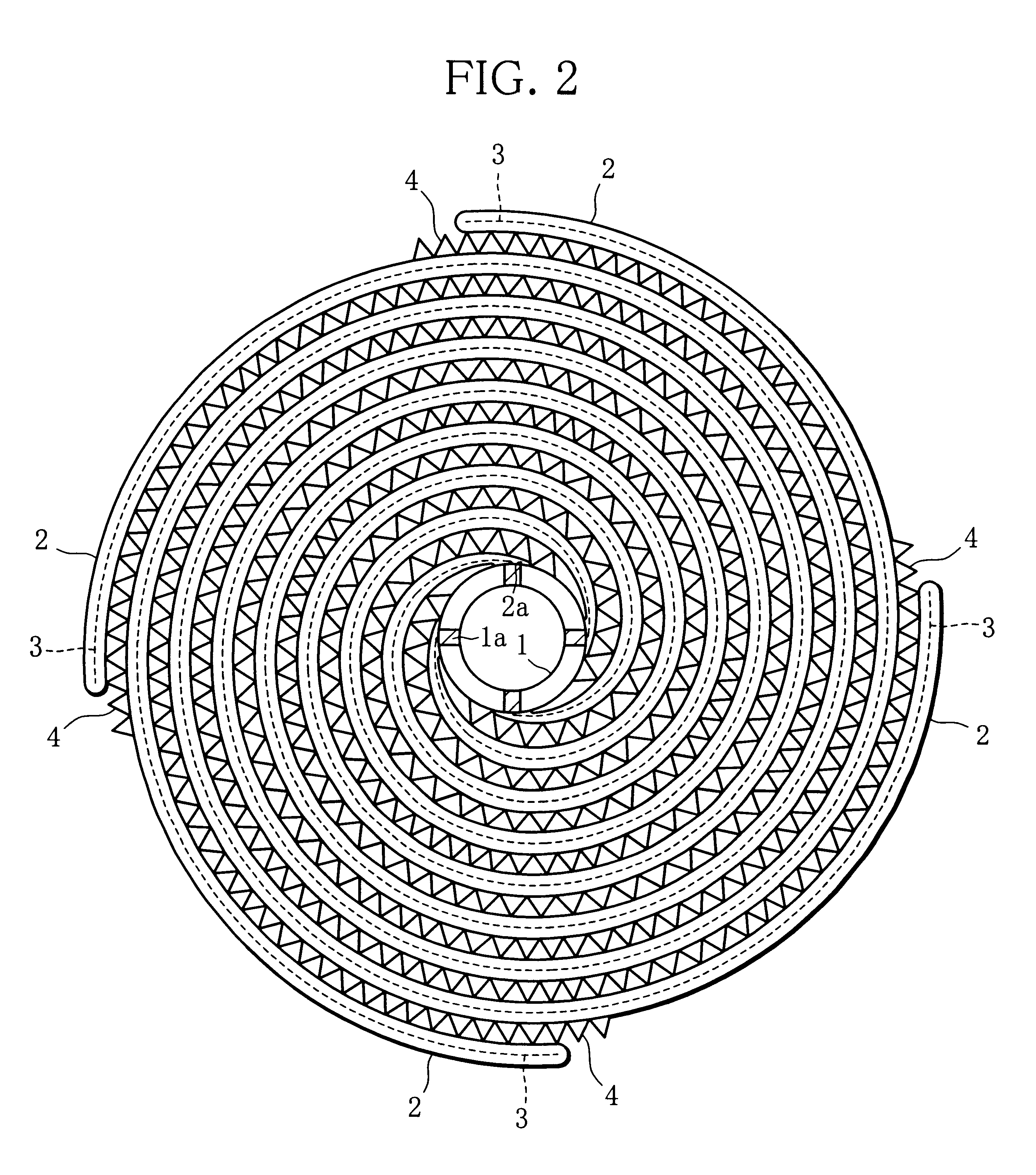Spiral reverse osmosis membrane element, reverse osmosis membrane module using it, device and method for reverse osmosis separation incorporating the module
- Summary
- Abstract
- Description
- Claims
- Application Information
AI Technical Summary
Benefits of technology
Problems solved by technology
Method used
Image
Examples
examples 2 to 5
Comparative Examples 2 to 5
(1) Preparation of Reverse Osmosis Membranes and Feed Liquid Passage Members
A cross-linked aromatic polyamide composite membrane was prepared, which was flat membrane having the performance such that permeated water was obtainable at a rate of 0.85 m.sup.3 / m.sup.2 day and at a salt rejection of 99.75% when a saline solution having a concentration of 3.5% was subjected to reverse osmosis separation, at a pressure of 5.5 MPa. The reverse osmosis separation was implemented by using a flat membrane evaluation cell provided with the composite membrane having an effective membrane area of 32cm.sup.2. The above-mentioned composite membrane will be referred to as membrane I.
Another cross-linked aromatic polyamide composite membrane was prepared, which was a flat membrane having the performance such that permeated water was obtainable at a rate of 0.87 m.sup.3 / m.sup.2.multidot.day and at a salt rejection of 99.72% when a saline solution having a concentration of ...
regarding example 4
and comparative example 5, pressure loss was also measured. The results are shown in table 2.
As apparent from table 2, when the elements of the present invention are used, the water permeate flow increases, the salt rejection increases and the pressure loss much decreases.
examples 6 to 17
Comparative Examples 6 to 14
A cross-linked aromatic polyamide composite membrane was prepared, which was a flat membrane having the performance such that permeated water was obtainable at a rate of 0.85 m.sup.3 / m.sup.2.multidot.day and at a salt rejection of 99.80% when a saline solution having a concentration of 6.0% was subjected to reverse osmosis separation, at a pressure of 9.0 MPa, using a flat membrane evaluation cell having an effective membrane area of 32cm.sup.2.
Non-woven fabric members of polyester short fiber were prepared, each having an average thickness and a permeability coefficient relative to pure water (at 25.degree. C.) as shown in table 3. Further, tricot members of single tricot having a double denbigh structure of polyester fiber were prepared, these tricot members having undergone curing by thermal fusion and surface calendering. The tricot members had each an average thickness as shown in table 3 and formed at one side with grooves specified in table 3. By ...
PUM
| Property | Measurement | Unit |
|---|---|---|
| Length | aaaaa | aaaaa |
| Thickness | aaaaa | aaaaa |
| Thickness | aaaaa | aaaaa |
Abstract
Description
Claims
Application Information
 Login to View More
Login to View More - R&D
- Intellectual Property
- Life Sciences
- Materials
- Tech Scout
- Unparalleled Data Quality
- Higher Quality Content
- 60% Fewer Hallucinations
Browse by: Latest US Patents, China's latest patents, Technical Efficacy Thesaurus, Application Domain, Technology Topic, Popular Technical Reports.
© 2025 PatSnap. All rights reserved.Legal|Privacy policy|Modern Slavery Act Transparency Statement|Sitemap|About US| Contact US: help@patsnap.com



